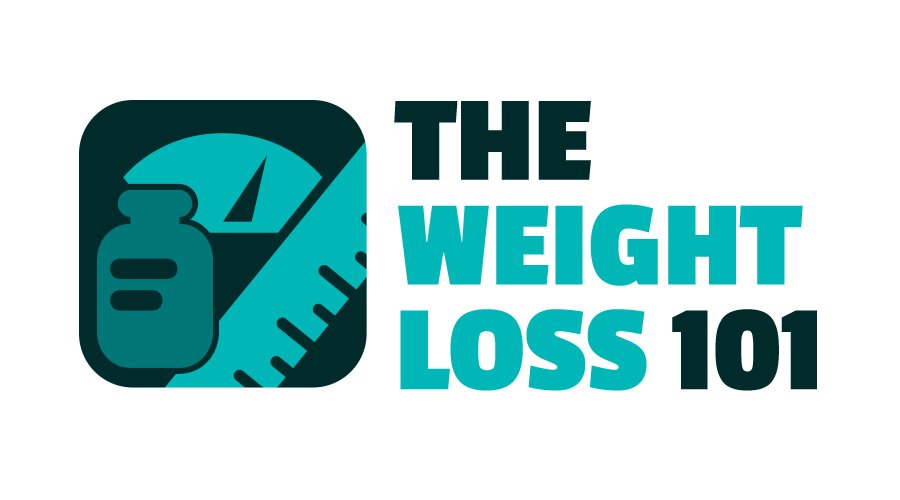When it comes to achieving sustainable weight loss, strength training is a powerful tool. Not only can it help you shed those unwanted pounds, but it also offers a range of other benefits for your overall health and fitness.
Weightlifting, specifically, is a fantastic way to incorporate strength training into your weight loss journey. By engaging in weightlifting exercises, you can effectively build and maintain muscle mass, which in turn increases your metabolism and helps you burn calories and fat—even after your workout is over.
Resistance training is another key component of successful weight loss. By engaging in exercises that challenge your muscles, you can boost your metabolism, improve your body composition, and maximize your fat-burning potential.
So, why is strength training so effective for weight loss? Let’s explore in more detail:
Key Takeaways:
- Strength training, particularly weightlifting exercises, is an effective option for sustainable weight loss.
- Weightlifting helps build and maintain muscle mass, increasing metabolism and calorie burn.
- Resistance training enhances fat loss and boosts overall body composition.
Benefits of Strength Training for Weight Loss
Strength training exercises offer numerous benefits for weight loss and overall fitness. Incorporating these exercises into your workout routine can have long-term sustainable effects on your weight loss journey. Let’s explore the key advantages of strength training:
1. Increased Metabolism: One of the primary benefits of strength training is its ability to build and maintain muscle mass. Muscles are metabolically active tissues, meaning they burn more calories even at rest. By increasing your muscle mass through strength training, you can boost your metabolism, making it easier to burn calories and fat.
2. Weight Management: Building muscle through strength training contributes to weight management. As you gain muscle, your body becomes more efficient at utilizing energy throughout the day, leading to a better balance between calorie intake and expenditure.
3. Improved Muscle Strength: Regular strength training enhances muscle strength, making it easier to perform day-to-day tasks. Whether it’s lifting grocery bags, carrying children, or participating in sports activities, having stronger muscles can make these activities more manageable and reduce the risk of injury.
4. Enhanced Bodily Functions: Strength training exercises promote better food processing and nutrient absorption in your body. This can contribute to better overall health, chronic disease prevention, and improved bodily functions.
5. Bone Health: Strength training is crucial for maintaining strong and healthy bones. Weight-bearing exercises stimulate bone growth and help prevent conditions like osteoporosis, especially in women.
6. Protection from Injuries: By strengthening the muscles and connective tissues, strength training helps protect the body from injuries. It can improve stability, balance, and joint flexibility, reducing the risk of accidents and supporting overall joint health.
To provide a visual representation of the benefits of strength training for weight loss, here is a table highlighting the key advantages:
| Benefits of Strength Training |
|---|
| Increased metabolism |
| Weight management |
| Improved muscle strength |
| Enhanced bodily functions |
| Bone health |
| Protection from injuries |
As you can see, strength training exercises offer a wide range of benefits for weight loss and overall well-being. Incorporating these exercises into your weight loss regimen can maximize your results and contribute to long-term sustainable weight loss.
How to Start Strength Training for Fat Loss

When it comes to achieving fat loss through strength training, it’s important to start with a well-designed program that incorporates both strength training and cardio exercises. This combination can effectively burn calories and fat, helping you to reach your weight loss goals. The intensity and duration of your weightlifting exercises will depend on factors such as your body type and level of expertise. For beginners, starting with lighter weights or bodyweight exercises is advisable, gradually increasing the intensity as you progress.
Benefits of Strength Training for Women
Strength training offers a multitude of benefits specifically for women. Not only does it help in burning fat, but it also increases muscle strength and improves overall body composition. Incorporating strength training into your fitness routine can help prevent age-related muscle loss and maintain bone density. It can also enhance energy levels, boost confidence, and promote mental well-being.
“Strength training is not only about building muscle, it’s about building resilience and confidence. It empowers women to take control of their bodies and embrace their strength.”
Developing an Effective Weight Training Program
When creating a weight training program for fat loss, it’s essential to focus on compound exercises that engage multiple muscle groups. Examples include squats, deadlifts, lunges, and bench press. These exercises not only burn calories during the workout but also continue to increase your metabolic rate long after you’ve finished exercising. Incorporating strength training into your routine 2-3 times per week, along with regular cardio exercises, can yield optimal results.
A balanced weight training program should include a combination of sets and repetitions that challenge your muscles without causing excessive strain. Consulting with a fitness professional or personal trainer can help you tailor a program that aligns with your goals and abilities. Remember to prioritize proper form and technique to prevent injuries and maximize the effectiveness of each exercise.
A Sample Weight Training Program for Fat Loss
If you’re looking for a sample weight training program to kickstart your fat loss journey, here’s an example:
| Day | Exercise | Sets x Reps |
|---|---|---|
| Monday | Squats | 3 x 10 |
| Push-ups | 3 x 10 | |
| Romanian Deadlifts | 3 x 10 | |
| Wednesday | Lunges | 3 x 12 |
| Overhead Shoulder Press | 3 x 12 | |
| Plank | 3 x 30 seconds | |
| Friday | Deadlifts | 3 x 8 |
| Bent-Over Rows | 3 x 8 | |
| Mountain Climbers | 3 x 15 |
This is just a sample program and can be adjusted based on your preferences and fitness level. It’s important to gradually increase the weight and intensity as your strength and endurance improve. Listening to your body and allowing for proper rest and recovery is also crucial for sustainable progress.
The Role of Cardio in Weight Loss
While strength training is important for weight loss, incorporating cardio exercises into your fitness regimen can provide additional benefits. Cardio workouts, when done at a moderate or high intensity, can help burn calories, improve endurance, and prevent chronic health conditions.
Cardio exercises can be performed as warm-ups before strength training or as standalone workouts. They are effective in elevating heart rate and increasing calorie expenditure, which can contribute to weight loss. Engaging in regular cardio sessions can enhance your weight loss journey and improve your overall fitness levels.
There are various forms of cardio exercises to choose from, such as running, cycling, swimming, or dancing. Find an activity that you enjoy and fits your preferences to make it easier to incorporate into your routine.
Benefits of Cardio for Weight Loss
Cardio exercises offer several benefits that can support your weight loss goals:
- Calorie burning: Cardio workouts help burn calories, which can contribute to creating a calorie deficit for weight loss.
- Endurance improvement: Regular cardio sessions can improve your cardiovascular endurance, allowing you to engage in longer and more intense workouts.
- Preventing chronic health conditions: Cardio exercises can reduce the risk of chronic diseases, such as heart disease, high blood pressure, and type 2 diabetes.
Engaging in regular cardio sessions can enhance your weight loss journey and improve your overall fitness levels.
It’s important to note that the effectiveness of cardio for weight loss may vary depending on factors such as intensity, duration, and frequency of the workouts. Consulting with a fitness professional can help you create a cardio plan that aligns with your goals and abilities.
Remember to listen to your body and gradually increase the intensity and duration of your cardio workouts over time. Balancing cardio with strength training and rest days can create a well-rounded fitness routine that promotes weight loss and overall health.
Importance of Rest Days

Taking rest days is a crucial component of any well-rounded exercise program, including weight loss regimens. Rest days play a vital role in allowing your muscles to heal and rebuild, which is essential for preventing injuries and maximizing exercise performance.
When you engage in physical activity, whether it’s strength training or cardio exercises, your muscles undergo stress and micro-tears. It is during rest days that these muscles repair themselves and become stronger. This healing process not only helps in preventing muscle imbalances but also supports overall muscle growth and development.
Moreover, rest days give your body a chance to recharge and recover. It allows your central nervous system, joints, and connective tissues to rest and rejuvenate. By giving your body the time it needs to recover, you minimize the risk of overtraining, which can have negative effects on your health and fitness progress.
The Benefits of Rest Days for Weight Loss
Rest days are not only essential for preventing injuries and promoting muscle recovery but also for supporting weight loss efforts. Here’s why rest days are important for weight loss:
- Optimal Hormonal Balance: Rest days help in maintaining optimal hormonal balance, such as cortisol levels, which can influence weight loss. When you overtrain or don’t allow your body enough time to rest, cortisol levels can increase, negatively affecting your ability to burn fat.
- Enhanced Performance: Rest days allow your body to recharge, leading to improved exercise performance. When you’re well-rested, you can push harder during your workouts, which can lead to more calorie burning and greater fat loss.
- Prevention of Plateaus: Continuous exercise without rest can lead to plateaus in weight loss progress. By incorporating rest days into your routine, you give your body the opportunity to adapt and continue making progress toward your weight loss goals.
It’s important to note that rest days do not mean complete inactivity. On rest days, you can engage in low-impact activities such as stretching, yoga, or leisurely walks. These activities help in promoting blood circulation, reducing muscle soreness, and aiding in recovery.
Give your body the rest it deserves. Incorporate one or two rest days into your weekly workout routine to optimize your weight loss journey and overall fitness progress.
Sample Workout Plan for Weight Loss
Creating a sample workout plan for weight loss involves incorporating a variety of exercises that target different muscle groups and promote calorie burn. This plan can include a combination of moderate-intensity cardio exercises, pure strength training, and metabolic resistance training (MRT). By diversifying your workouts, you can engage your body in different ways and maximize fat loss. Here’s an example of a weekly workout regimen:
Day 1: Cardio and Full-Body Strength Training
– 30 minutes of moderate-intensity cardio, such as brisk walking or cycling
– Full-body strength training workout, including exercises like squats, lunges, chest press, and rows
– Aim for 2-3 sets of each exercise, with 10-12 repetitions per set
Day 2: Rest
– Allow your body to recover and repair the muscles after the previous day’s workout
Day 3: High-Intensity Interval Training (HIIT)
– Perform a HIIT workout consisting of short bursts of intense exercise followed by brief recovery periods
– Examples include sprint intervals, jumping jacks, burpees, or mountain climbers
– Aim for 20-30 minutes of HIIT, alternating between high and low-intensity intervals
Day 4: Rest
– Give your body another day of rest to prevent overtraining and promote muscle recovery
Day 5: Lower Body and Core Strength Training
– Lower body workout focusing on exercises like squats, lunges, deadlifts, and glute bridges
– Incorporate core exercises such as planks, Russian twists, and bicycle crunches
– Complete 2-3 sets of 10-12 repetitions for each exercise
Day 6: Cardio
– Engage in 45-60 minutes of steady-state cardio, such as jogging, swimming, or cycling
– Maintain a moderate intensity throughout the session to promote fat burning
Day 7: Rest
– Enjoy a well-deserved day off from structured exercise and focus on active recovery, such as gentle stretching or a relaxing walk
Remember, this is just a sample workout plan, and it can be adjusted based on your fitness level, preferences, and availability. It is important to consult with a healthcare provider or a certified personal trainer to ensure the safety and effectiveness of your workout program. Stay consistent, challenge yourself, and remain dedicated to achieving your weight loss goals.
Conclusion
In conclusion, incorporating strength training into your fitness routine is a powerful strategy for achieving sustainable weight loss. By building and maintaining muscle mass, you can increase your metabolism and effectively burn calories and fat. Adding strength training to your workout regimen, along with cardio exercises, rest days, and a balanced nutrition plan, can lead to long-lasting weight loss results.
When starting your strength training journey, it is important to begin at a comfortable pace and gradually increase the intensity. Listen to your body and make adjustments as needed. If you’re unsure about proper form or technique, consider seeking guidance from a qualified fitness professional who can create a personalized program for you.
Remember, sustainable weight loss is a journey, not a race. It requires consistency, patience, and a commitment to healthy habits. By incorporating strength training into your routine, you can transform your fitness and weight loss goals and achieve the sustainable results you desire. So get started today and take the first step towards a healthier, stronger, and leaner you!




